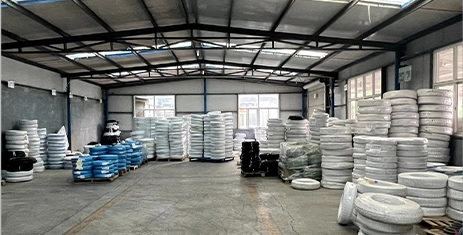Step-by-Step Guide to Installing Power Steering Hose in Your Vehicle
Installing a Power Steering Hose A Step-by-Step Guide
Power steering is an essential component of modern vehicles, providing drivers with improved control and ease of handling. One crucial part of this system is the power steering hose, which carries the fluid necessary for its operation. If you're experiencing issues with your power steering, such as leaks or reduced effectiveness, you may need to replace the power steering hose. In this article, we will guide you through the process of installing a new power steering hose.
Understanding the Power Steering System
Before diving into installation, it's important to understand how the power steering system works. The power steering pump generates hydraulic pressure, which assists in the movement of the steering gear. The power steering hose transports the hydraulic fluid from the pump to the steering gear. Over time, these hoses can wear out, becoming brittle or leaking due to age or exposure to heat and contaminants.
Tools and Materials Needed
Before starting the installation, gather the following tools and materials - New power steering hose (make sure it’s compatible with your vehicle) - Socket set - Wrenches - Pliers - Fluid catch pan - Screwdriver - Clean rags - Power steering fluid
Step-by-Step Installation
1. Preparation Ensure your vehicle is parked on a level surface and the engine is cool. To avoid any accidents, disconnect the negative battery cable to eliminate any electrical power.
2. Locate the Power Steering Hose Open the hood and locate the power steering pump. The power steering hose usually has two sections the high-pressure hose connected to the pump and the return hose that goes back to the reservoir.
install power steering hose

3. Drain the Power Steering Fluid Place a fluid catch pan underneath the pump to catch any fluid that may spill during the process. Using pliers, remove the clamps securing the hoses to the pump and the steering gear. Carefully disconnect the hoses, allowing any remaining fluid to drain into the pan.
4. Remove the Old Hose With the old hose detached, inspect it for signs of wear, such as cracks or bulges. If the hose is damaged or leaking, it’s time for a replacement. Remove any old clamps or brackets that are part of the old installation.
5. Install the New Hose Take your new power steering hose and compare it to the old one to ensure it matches in length, diameter, and fittings. Carefully position the new hose in the same routing as the old one, avoiding contact with any hot engine components. Secure the hose to the pump and steering gear using the new or existing clamps, ensuring a tight fit.
6. Reconnect the Power Steering System After securing the hose, connect the negative battery cable. It’s time to refill the power steering fluid. Check your vehicle’s manual for the correct type of fluid and pour it into the reservoir.
7. Bleed the Power Steering System Start the engine and turn the steering wheel from lock to lock several times. This process helps remove any air bubbles from the system. Keep an eye on the fluid level and add more if necessary.
8. Check for Leaks After bleeding the system, visually inspect the connections for any signs of leaks. Run the engine for a few minutes and observe the hose. If everything looks good, you're ready to go!
9. Final Check Once you’re satisfied that there are no leaks, close the hood, and take your vehicle for a test drive. Pay attention to the steering feel; it should be smooth and responsive without any whining noises from the power steering pump.
Conclusion
Replacing a power steering hose may seem daunting, but with the right tools and guidance, it can be a manageable task for those with basic mechanical skills. Regular maintenance of your power steering system, including timely hose replacements, can ensure optimal vehicle performance and safety. If you ever feel uncertain during the process, don't hesitate to consult a professional mechanic for assistance. Remember, maintaining your power steering system is crucial not only for your vehicle's longevity but also for your safety on the road.
-
Ultimate Spiral Protection for Hoses & CablesNewsJun.26,2025
-
The Ultimate Quick-Connect Solutions for Every NeedNewsJun.26,2025
-
SAE J1401 Brake Hose: Reliable Choice for Safe BrakingNewsJun.26,2025
-
Reliable J2064 A/C Hoses for Real-World Cooling NeedsNewsJun.26,2025
-
Heavy-Duty Sewer Jetting Hoses Built to LastNewsJun.26,2025
-
Fix Power Steering Tube Leaks Fast – Durable & Affordable SolutionNewsJun.26,2025

